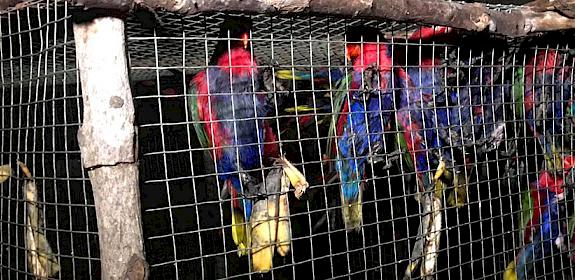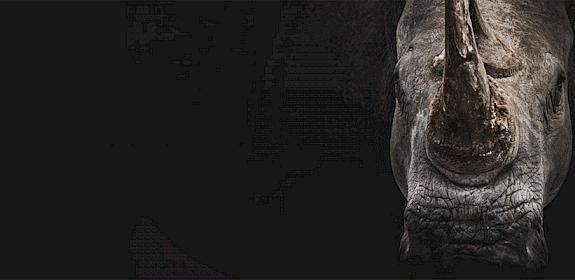Strengthening owl protection in India: new tools launched on world wildlife day
New Delhi: Owls are commonly found in the illegal wildlife trade in India due to various superstitions and taboos attached to them. Despite the immense ecological role of owls in our ecosystem, these endangered birds are trapped in large numbers for sacrifice and use in multiple rituals often promoted by local mystic practitioners.
Download ID cards
in English Download ID cards
in Hindi
Mr Ravi Singh, Secretary General & CEO, WWF-India, said, "Owls play an essential ecological role in our ecosystem. They enhance agricultural productivity by keeping a check on the rodent populations. Unless trafficking and illicit trade of owls is controlled, the owl populations will remain under threat. Adequate conservation and protection efforts for owls and other endangered species is crucial for maintaining a healthy ecosystem".
The main strategies to recover key wildlife species is to provide them with a safe habitat and protect them from the threats of poaching and illegal trade. Protecting owls will support much wider ecosystem restoration and biodiversity.”
Dr Saket Badola IFS and Head of TRAFFIC's India office
“Echoing this year's World Wildlife Day theme, ‘Recovering key species for ecosystem restoration,’ we are releasing these ID cards that will help wildlife law enforcement officials in their endeavours to protect the wildlife of India."
The owl ID cards will enable law enforcement to accurately identify 16 commonly found species in the illegal wildlife trade. The ID cards are available in English and Hindi and will be distributed free to wildlife law enforcement agencies across India.
Authored by Dr Saket Badola and Dr Merwyn Fernandes, Coordinator, TRAFFIC's India office, the new ID tools provide essential information related to the species' legal status, habitat, and distribution. They provide valuable tips on identifying the owls at the species level and highlight common threats.
India is home to about 36 owl species, all protected under the Wildlife (Protection) Act, 1972, making their hunting, trade, or any other form of utilisation a punishable offence. All owl species found in India are also listed under the Convention on International Trade in Endangered Species of Wild Fauna and Flora (CITES), which restricts their international trade. However, since 2019, at least 20 seizure incidences related to the poaching and trafficking of owls have been reported in India, while many more go unreported.
TRAFFIC and WWF-India’s new identification (ID) tools for strengthening owl protection were launched on 3rd March 2022, World Wildlife Day, by Mr Bharat Jyoti, Director-IGNFA; Dr AJT Johnsingh, Eminent Wildlife Scientist; Mr Ravi Singh, SG & CEO, WWF-India; Ms Nidhi Srivastava, Principal, CASFOS; and Dr Saket Badola, Head, TRAFFIC India at CASFoS (Central Academy for State Forest Service), Dehradun.
Notes:
World Wildlife Day (WWD) is celebrated every year on 3rd March. This year's theme was "Recovering key species for ecosystem restoration". The celebrations draw attention to the conservation status of some of the most critically endangered species of wild fauna and flora and drive discussions towards imagining and implementing solutions to conserve them.
TRAFFIC's latest poster and new identification cards highlight 16 owl species most commonly recorded in the illicit wildlife trade. These include:
- Asian Barred Owlet Glaucidium cuculoides
- Barn Owl Tyto alba, Brown Fish Owl Ketupa zeylonensis
- Brown Hawk Owl Ninox scutulata
- Brown Wood-owl Strix leptogrammica
- Collared Owlet Glaucidium brodiei
- Collared Scops-owl Otus bakkamoena
- Dusky Eagle Owl Bubo coromandus
- Eastern Grass-owl Tyto longimembris
- Jungle Owlet Glaucidium radiatum
- Mottled Wood-owl Strix ocellata
- Oriental Scops-owl Otus sunia
- Rock Eagle-owl Bubo bengalensis
- Spot-bellied Eagle-owl Bubo nipalensis
- Spotted Owlet Athene brama
- Tawny Fish-owl Ketupa flavipes.
WWF

WWF is an independent conservation organization, with over 30 million supporters and a global network active in over 100 countries. WWF's mission is to stop the degradation of the Earth's natural environment and to build a future in which humans live in harmony with nature, by conserving the world's biological diversity, ensuring that the use of renewable natural resources is sustainable, and promoting the reduction of pollution and wasteful consumption. Visit www.panda.org/news for the latest news and media resources and follow us on Twitter @WWF_media.




